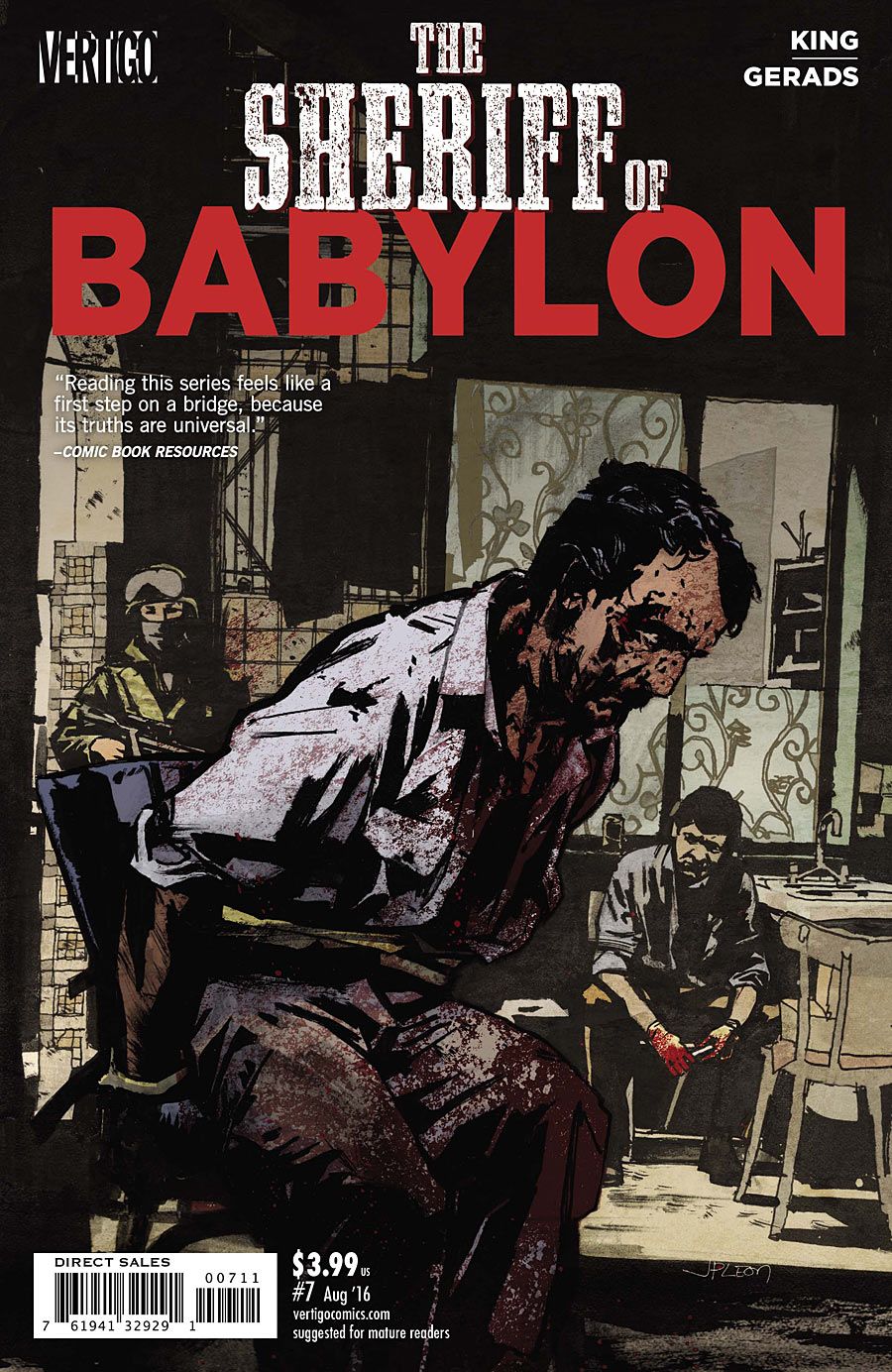In Tom King and Mitch Gerads' "The Sheriff of Babylon" #7, all the antagonism and tension that has built up over the last few issues is released in an ugly scene of "enhanced interrogation." Any story covering recent events in the Middle East would have to touch upon the subject of torture, and so it seems that "The Sheriff of Babylon" was always headed to this dark place. What's unexpected, however, is how King and Gerads link Sofia's unanticipated ordeal to Nassir's fate, and how they depict both characters' endurance.
The wordless first page of "The Sheriff of Babylon" #1 is deliberately startling. Gerads' visual storytelling is superb here, particularly his handling of body language. The tight nine-panel page composition keeps the tension high, while his delicate linework is beautifully expressive in the lines of Sofia's back; the strained muscles in her face are eloquent as she looks bleakly into a mirror. The grayish teal and contrast of glowing sunlight and shadows make the scene feel even more important. What is going on isn't clear until Gerads shows what Sofia is Googling in a clever panel later on, but -- on the first page -- it's the senses and emotions that are necessary, not the causes or explanations.
Sofia is seated on a toilet in the first panel, but there's not even a suggestion of laughter or awkwardness. Instead, her sadness and weariness are what register first. Gerads' backgrounds are full of three-dimensional texture, but the amount of detail never distracts the reader from the characters or conversations. The bloody menstrual pad is both an everyday sight and a shock, as Gerads neither lingers on it unduly nor avoids looking at it head on. This intimate, matter-of-fact and realistic treatment of women's bodies is rare in any medium.
Gerads' unflinching but sympathetic gaze on the human body serves the characterization and the thematic power of the story again in the torture scenes. These pages are hard to read and even harder to look at, but they feel neither exaggerated nor untrue. The horror doesn't stem so much from the violence as the interrogators' attitudes.
It's not all gloom and doom, and that's what makes "The Sheriff of Babylon" #7 feel even more real. Even on the page where Sofia asks "how much more blood can there be?", there is beauty in the play of light and pattern across her body. There's even ironic humor as Nassir's interrogators casually talk about watching "24," the popular TV show that has been criticized for glorifying and normalizing the use of torture.
"The Sheriff of Babylon" #7 is split between Sofia and Nassir, sometimes going back and forth more than once on the same page. King's precise, delicate structure feels highly artificial, but everything he and Gerads put inside the structure is fluid and naturalistic.
On the surface, it seems like an odd choice to link Sofia's "natural" ordeal so closely to Nassir's sufferings under torture. Miscarriage is often painful, sometimes emotionally as well as physically, and ten to twenty-five percent of all pregnancies are ended by it, but its mundanity and frequency don't lessen its agonies. King and Gerads don't diminish Nassir's ordeal by comparing it to Sofia's; rather, both characters are both enlarged by how they endure. "The Sheriff of Babylon" #7 is not about whose suffering is more profound, but about how pain is universal. Less subtly, it shows the dubious results of using violence as a way to gather information and find solutions.
King and Gerads examine suffering and the nature of cruelty directly. Indirectly, they also look at the lack of relief from suffering. Both Nassir and Sofia seem isolated like saints in their ordeal, but they also come across as ordinary people, and thus their strength feels like something anybody could aspire to. Without telling the reader what to think, "The Sheriff of Babylon" #7 asks hard questions about what kinds of suffering are preventable and how to prevent them.

